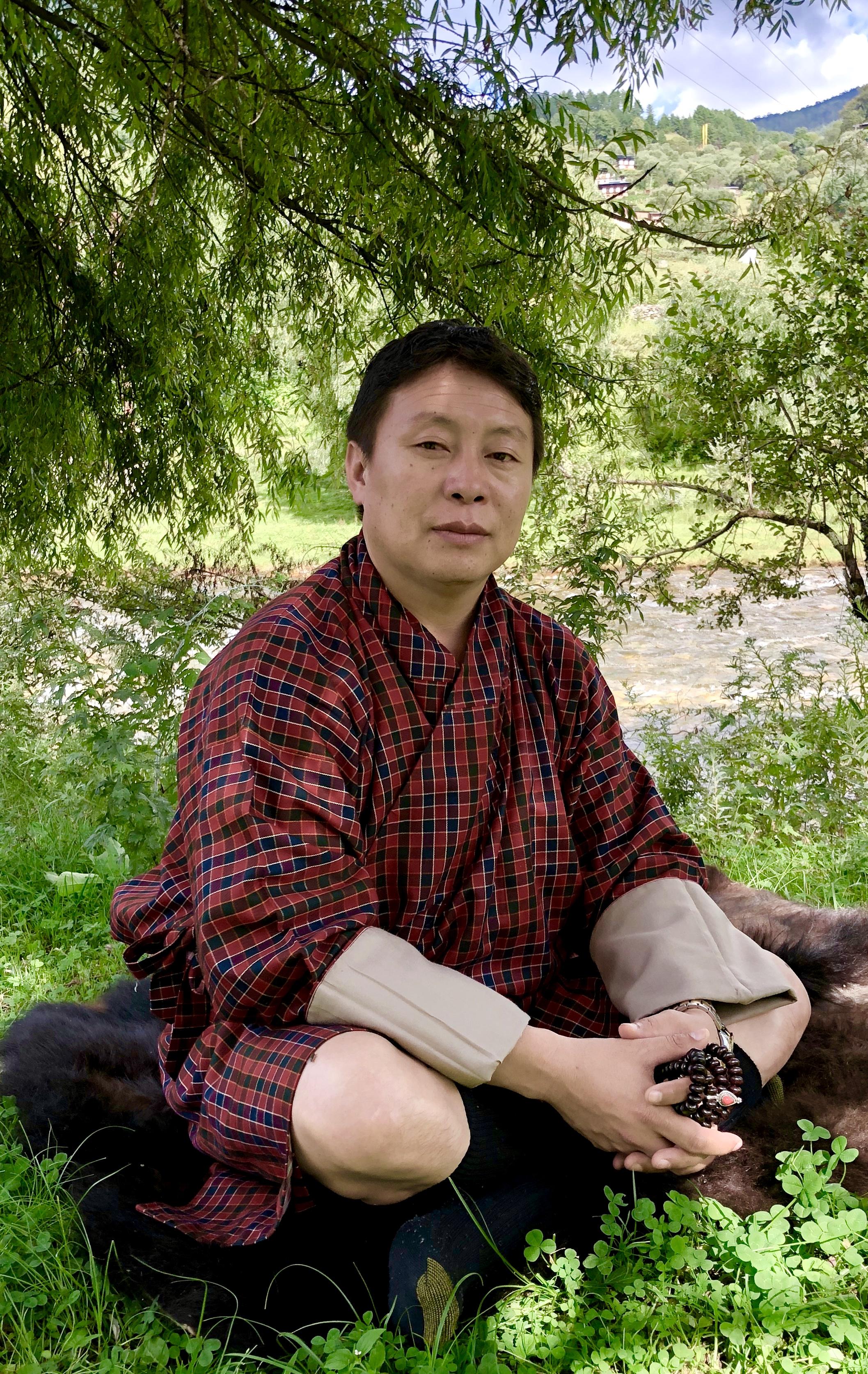
This week my Lama showed me some new facets of himself, his family, and life in Bhutan.
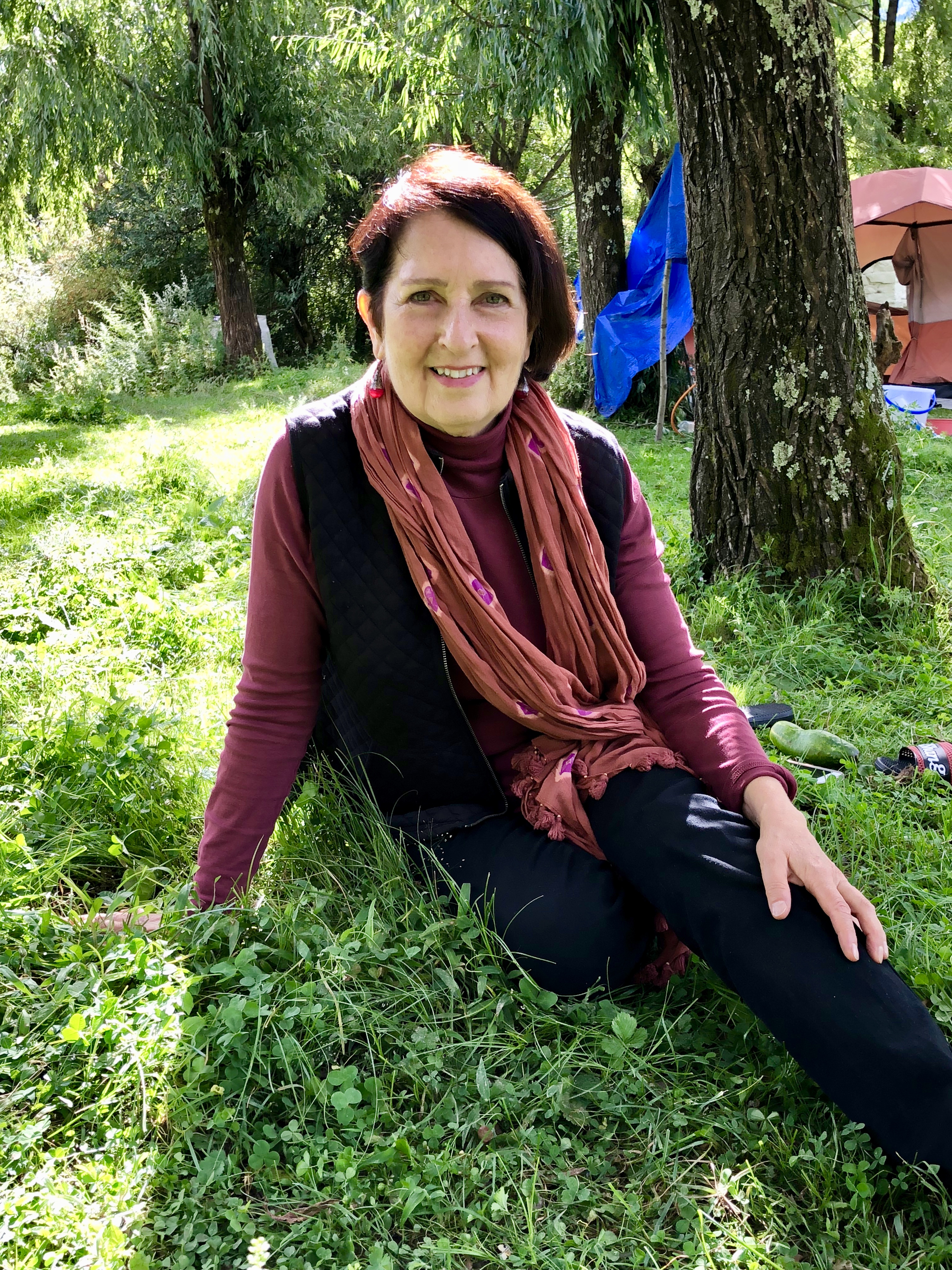
Our campsite by the river was relaxing and refreshing. Bhutan has so many rivers filled with clean, gurgling “happy water”. The air is clean, the sunlight is bright. I feel myself relaxing more every day.

Lama introduced me to his four mothers. This is Khandu, the one that nursed him as a baby when his birth mother had no milk. He visits her often to treat her and give rejuvenating massages. His other three mothers are sisters who live together in the farmhouse in Punakha – see our visit below.
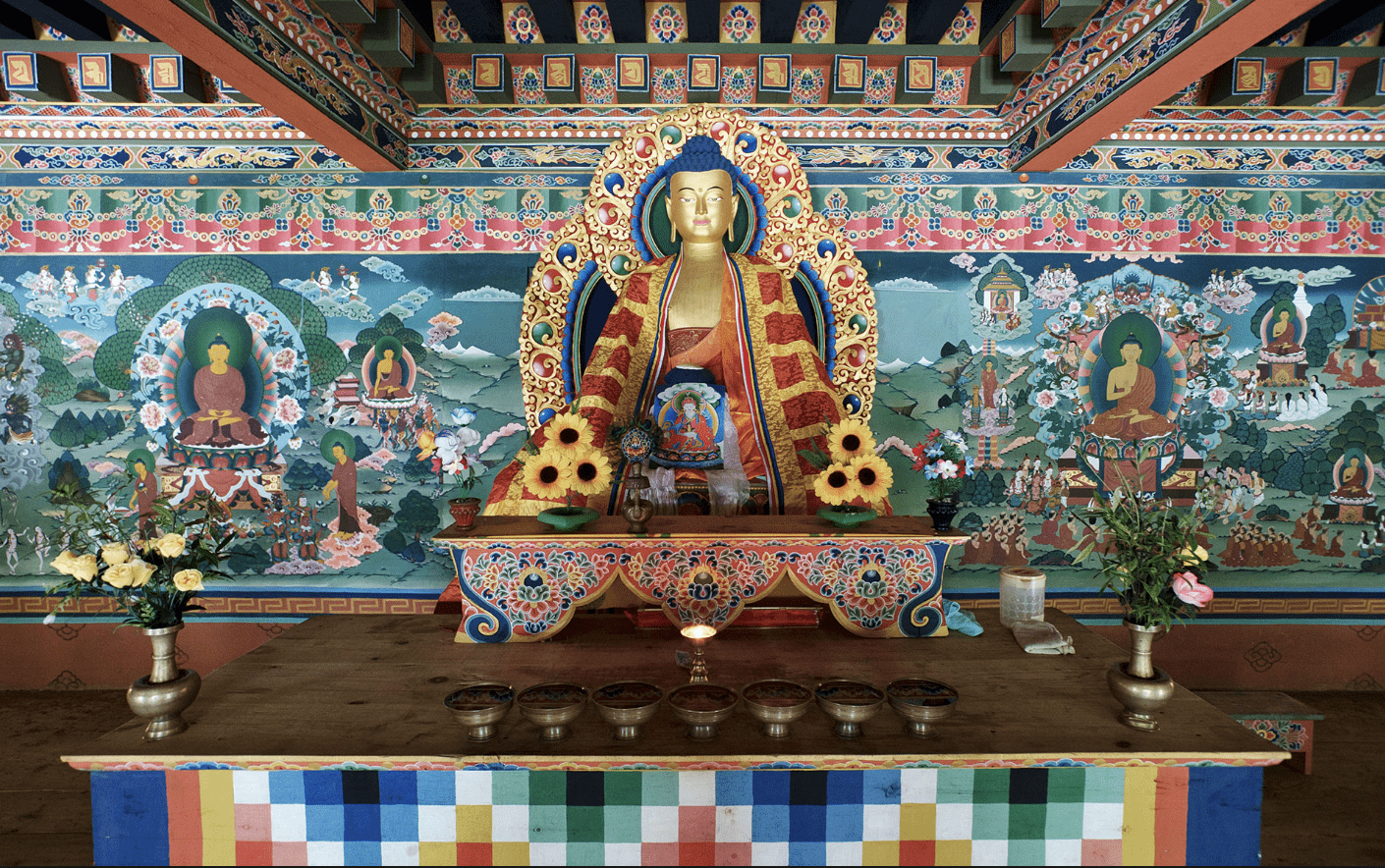
We visited Simtokha Dzong, the monastery in Thimphu where my Lama went to school.

At Simtokha Zong, we were cordially received by the staff, many of whom recognized him from his days as a monk.

To enter Simtokha Dzong monastery I had to remove my shoes. Only one problem – I had to show everyone my new Indian socks, a bit of a distraction to the security guards, staff, and 250 monks. They all stared at my feet, and no one said a word.

Today is the celebration to decorate and bless vehicles.
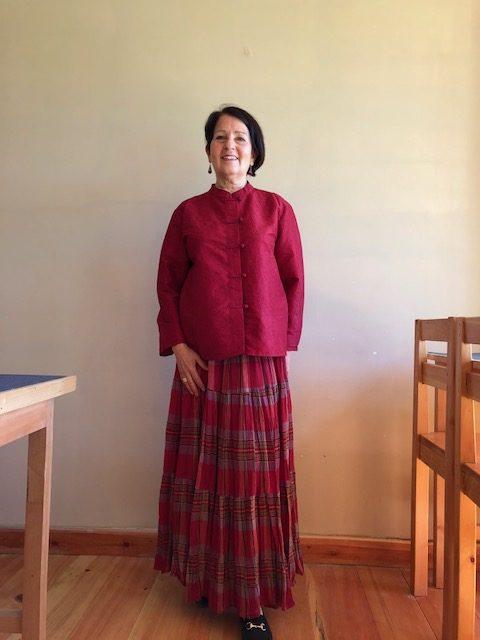
We visited Paro and stayed at Lama’s sister’s Seasons Hotel. Her name is Thujee Zam. I wore my English teacher outfit for an interview at a high school. This outfit was a surprising find in Santa Fe second hand stores. It’s nice and loose, frumpy-professional, travels well, and covers everything completely.
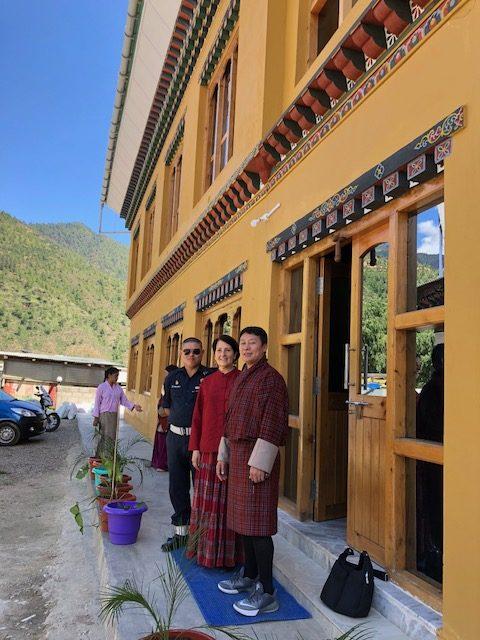
I met Lama’s policeman brother Bela in Paro. He’s a tough guy with a sweet heart, and is responsible for overseeing all traffic in the city of Paro.

My interview with the Paro school principal went very well. They are sending my application to the Ministry of Education to request permission to bring me on as an English teacher for 11th an 12th graders.

Our next adventure was a drive east to Punakha to visit Lama’s birthplace and his family. It’s a 3-hour drive, and the scenery was awesome. Periodically we pass sacred locations such as monasteries or a relative’s home. To send a blessing and prayer, we place a few bills of money on the forehead, and then throw them out the window of the car. I like this.
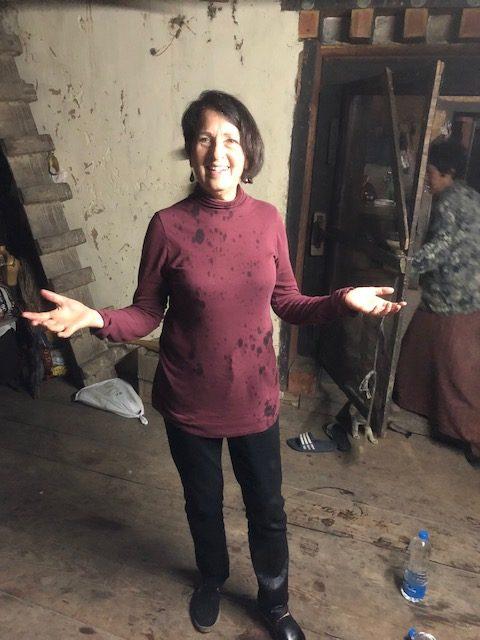
As we carried food and gifts up a steep stairway into Lama’s farmhouse, one of the bags broke, a plastic bottle fell, and cooking oil poured all over me. It was an ice breaker, and we all laughed. Lama said it’s a very auspicious sign.

We brought special gifts for dinner, and preparations began immediately on the large kitchen floor. We brought cooking oil, peppers, garlic, red rice, fresh yak cheese, and wasp nests. Lama’s cousin-brother, Phubha Namgye prepped the wasp nests, carefully removing all the larvae. I asked what they were, and he said “baby bees”.

Turns out this dish is called Kuri, made of large local wasps or hornets. It is a tasty preparation of larvae with chili and oil, a very expensive treat, and extremely beneficial for health. The nests are treated with smoke and taken down at night. Bhutanese people love this delicacy very much. In fact, it’s illegal to harvest the nests in sustainable-conscious Bhutan. But you can buy them for a price.
A quiet family dinner with the family. Lama is pleased that I remember everybody’s name. After dinner, neighbors and extended family start coming in, and by 9pm the room is packed with people just sitting around on the floor, talking together and saying hello. The fun lasted until after midnight. Finally I said “Zem cha de le”, meaning “good night”, and found my makeshift bed in the huge farmhouse.

This is our delicious breakfast. Lama’s other 3 mothers live here. 2 of them were here today. This is Sangye Pida’ serving red rice, emma datsi, and vegetable soup with dried beef. Lama’s grandmother’s bed is on the right. We drink butter tea with fresh milk, and we eat breakfast with our hands.
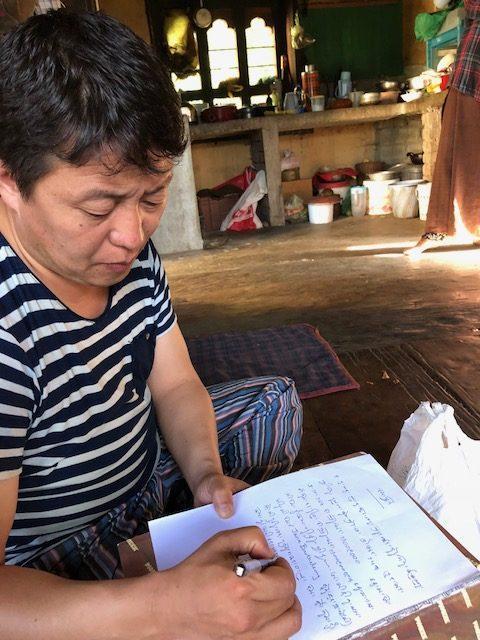
Before we leave in the morning, Lama drafts a document for his mother to sign, consenting to our marriage. He writes in Dzongkha Uchen script – except for my name, which is in Roman letters. They use a family seal stamp and she signs over it with a thumbprint.
Lama’s family shrine room is sumptuously adorned with statues and paintings. I did my meditation here this morning. In Bhutan, every home has a shrine room for daily prayers and special gatherings. You can see the mountains in the distance. Nearby outside are the family rice fields and garden where they produce olives for olive oil, corn, cucumbers, chili peppers, oranges, and guavas.

Saying good-bye to the family. This is a huge farmhouse that housed Lama’s 3 mothers, who are sisters, with their husbands and all their children when he was growing up. Lama has one full brother, many brother-cousins, sister-cousins, countless nieces, nephews, and so many other relatives in the village. Yep, the stairway is pretty steep.

Saying good-bye to Lama’s 2 mothers, Sangye Pida’ and Namgye Zam. Lama’s uncle Azha Rinzi’ is on the right. These are strong, capable people who live a rustic life and really care about their huge family.
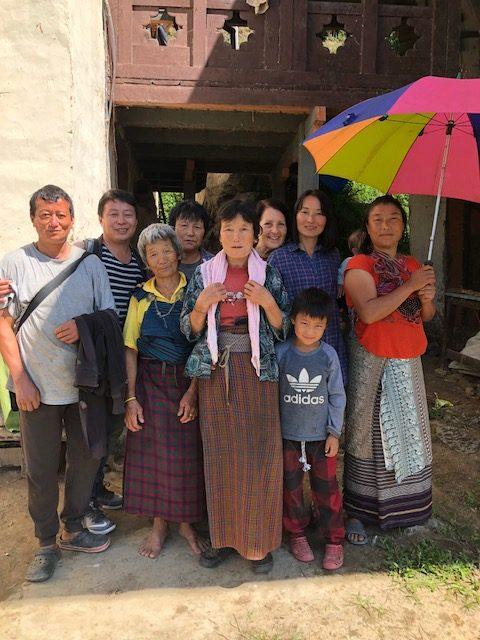
Saying good bye to the family. From left to right: Azha Rinzi’, Lama, I don’t remember, Namgye Zam, Sangye Pida’, me, Ghalem Wang, Azha Rinzi’s wife and 2 of their 5 children. Although they may live in different cities, they make all family decisions together, connecting every day seamlessly with iPhones on WeChat social networking.
My first suspension bridge crossing extends across a deep mountain river near Lama’s farmhouse. The 3-hour drive to Punakha goes through beautiful mountain scenery. The last 1.5 hours took us onto a dirt road, and the last half hour was through tropical virgin forest on a steep muddy road. We parked, unloaded gifts for the family and everyone helped carry them across the suspension bridge in the dark. On the other side, uncle’s truck was ready to to pick us up and drive us up a steep road to the house. There’s an easier road to the house but it was blocked by a recent landslide. This video was taken as we were leaving the following morning.
A relaxing drive back to Thimphu, we stopped here to have lunch. Lama and my new sister Tsering Om sing a song by the river.
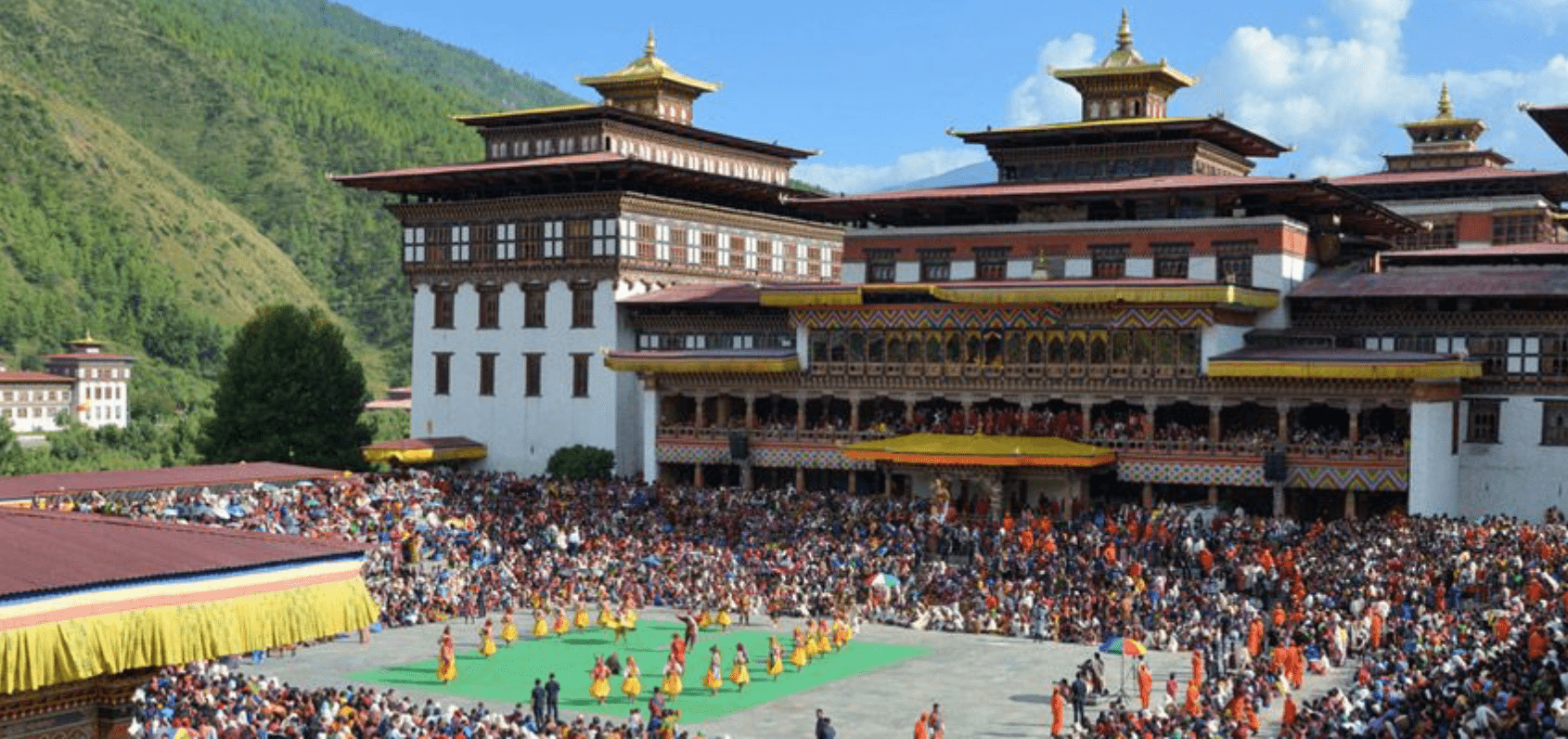
Thimphu Tshechu is a three-day festival in September. It starts on the 10th day of the 8th lunar month. The Tshechu plays an important role for Bhutanese, to help cleanse bad Karma and to remind people of what is important in their lives.
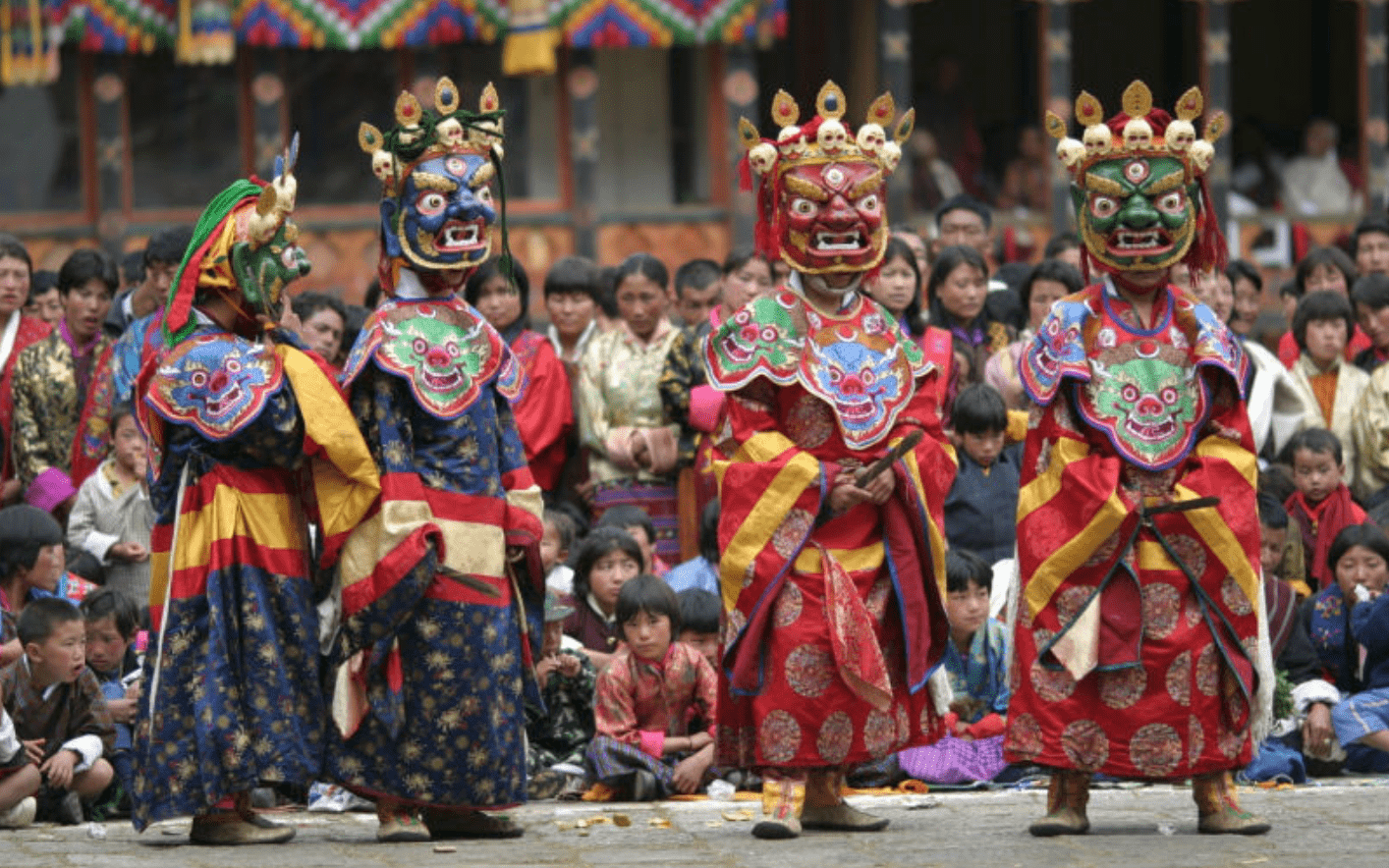
This spiritual-social event brings families together. The sacred mask dance (Chham) is performed only by Lamas. It invokes deities blessings to all who witness it.

This is at the Tshechu with Ghalem, Lama’s sister. She dressed me for the day, and showed me how to wear a kira.

This is with my other new sister, Tsering Om, and Ghalem’s daughter Kaysang.
Today thousands of people come to the monastery for Tshechu, all dressed in their finest formal clothes and jewelry. They’re lining up to enter the monastery to see the performances. Bhutanese people are beautiful. They love to wear fine fabrics, silks and jewelry.

I grabbed this masked monk for a photo.

At the Thimphu Tshechu, my best friends and new sisters are Ghalem Wang and Tsering Om. I am so grateful to them for accepting me and introducing me to Bhutan.

This is Tsering Om, Lama’s sister, daughter of Khandu, his feeding mother. I am wearing her kira today.

Leaving the Tshechu festival, with Tsering Om and Khaysang.
Thanks for joining me. This weekend we’ll be celebrating Bhutanese Autumn Equinox, the weather turning to Fall. They call it the “Rain Blessing Day”. Our wedding will also be happening next week. Probably my travel log will come out at 6am MST every Friday. Stay tuned…


